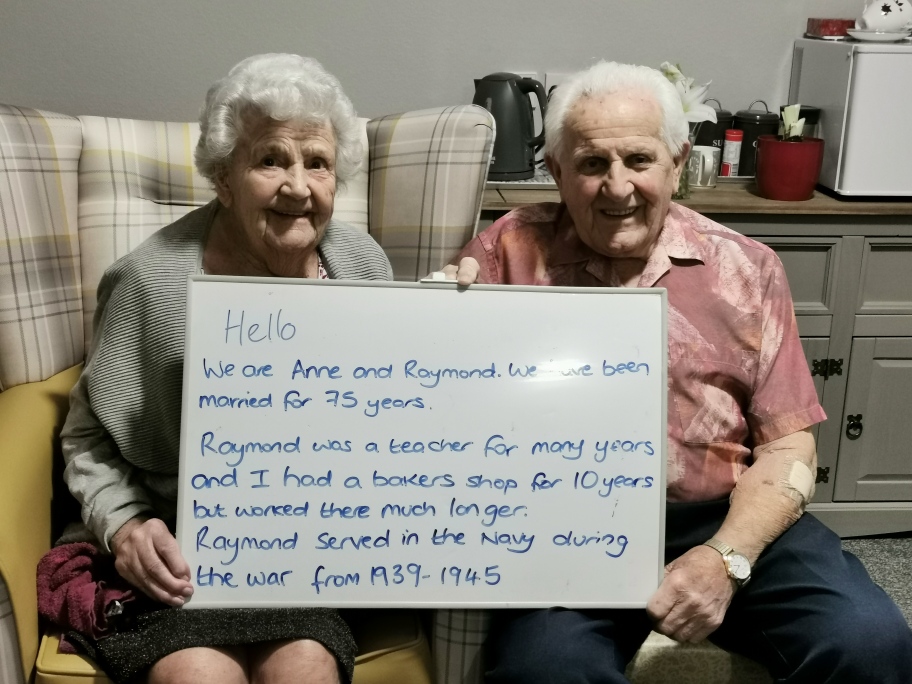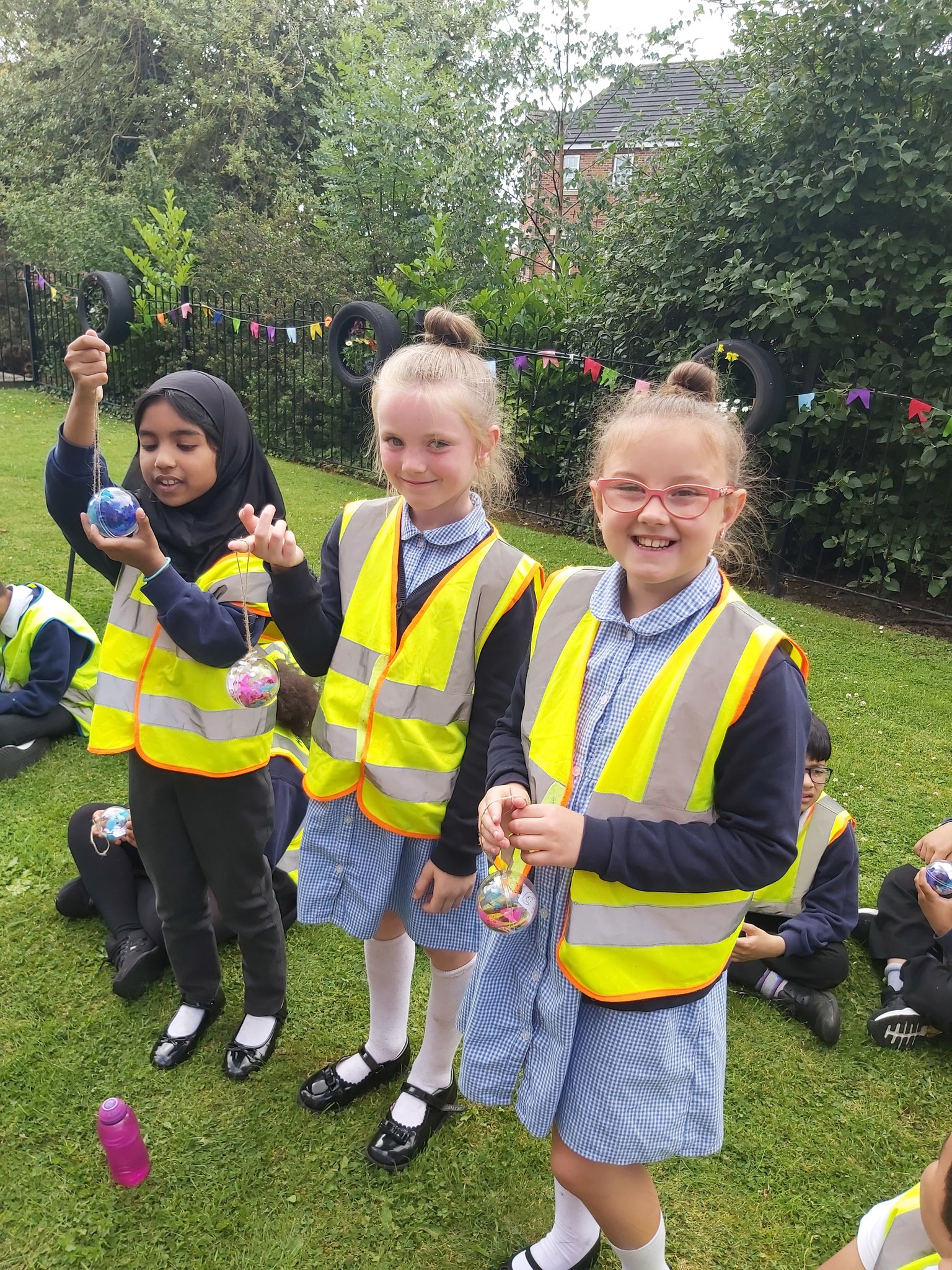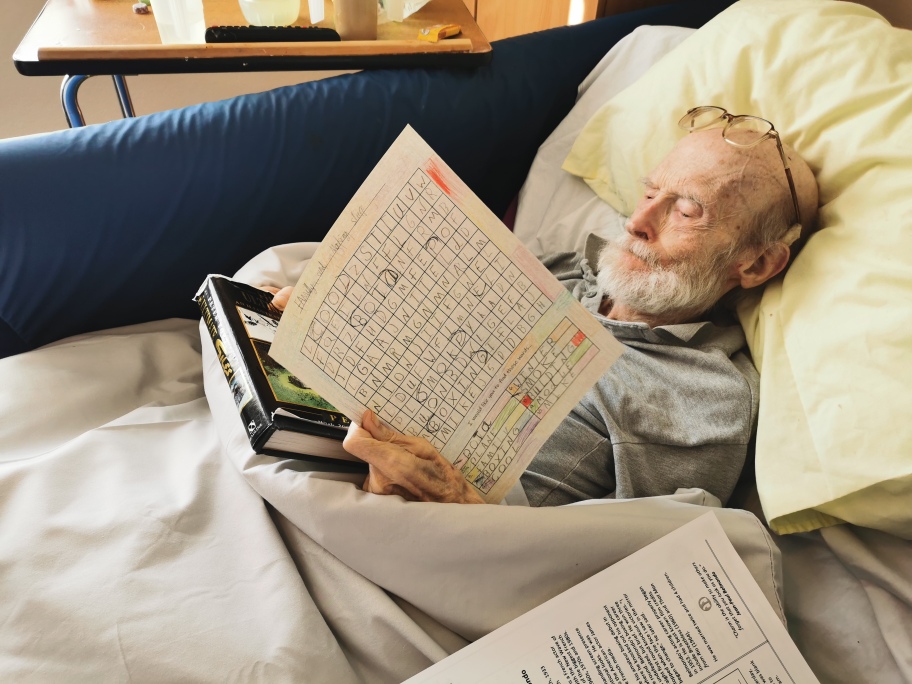Intergenerational Linking in care homes: spreading joy and understanding across the generations
“I wanted to take part because I wanted the older generation in our community to know that we care about them.”

Ellie from Bristol is one of many hundreds of children who, over the past year, have been connecting with older people living in a nearby care home. They are all involved in Care Home Friends and Neighbours: Intergenerational Linking – a national social action project linking together young people aged 5-14 from schools and youth organisations in less socio-economically advantaged areas of England with older people living in care homes. The project is led by a partnership between us at My Home Life England (MHLE) and The Linking Network (TLN); a venture that combines MHLE’s expertise with older people and care homes with TLN’s expertise working with young people and schools to create meaningful intergenerational friendships that are mutually beneficial and strengthen community connection.
Thinking big
 As a partnership, we’re supporting a network of local charities and organisations to lead the project in different areas of England and make a real difference to the lives of younger and older people and their communities.
As a partnership, we’re supporting a network of local charities and organisations to lead the project in different areas of England and make a real difference to the lives of younger and older people and their communities.
Alive in Bristol and The Linking Network in Bradford first piloted the project in early 2020 and there are now 11 active projects ranging right across the country from the North East down to the South West. The organisations bring a wealth of their own experiences with younger and older people as well as understanding of their local landscape, and are using this knowledge to support the creation of intergenerational connections.
As a national project we’re forging an exciting path too – this is the first time that a group of charities and organisations have been funded to start intergenerational linking in different parts of England at the same time, making Care Home Friends and Neighbours: Intergenerational Linking England’s largest scale intergenerational project!
We hope that over 4,000 participants from schools, youth groups and care homes will take part in intergenerational linking over the next 12 months, made possible by funding from The Dunhill Medical Trust and the #iwill Fund from The National Lottery Community Fund and the Department of Digital, Culture, Media & Sport.
Building friendships
 With the support of a local ‘community broker’ who leads the project in their area, a school or youth group is supported to link with a nearby care home over a period of 18 months. Starting with introductions, younger and older people have spent time getting to know one other. As Jasmine, a year 5 pupil put it, “it’s really fun to write letters and pass them back and forth”.
With the support of a local ‘community broker’ who leads the project in their area, a school or youth group is supported to link with a nearby care home over a period of 18 months. Starting with introductions, younger and older people have spent time getting to know one other. As Jasmine, a year 5 pupil put it, “it’s really fun to write letters and pass them back and forth”.
With the majority of contact so far taking place during a time of COVID-19 lockdowns and social distancing, interestingly some projects reported that their links were preferring traditional means of communications such as letters and artwork, rather than more time spent in front of screens. Classroom displays have also been created to support children’s learning and pupils have discussed topics such as memories and ageing to help them connect with their new friends and deepen their understanding of topics such as dementia and “what does it mean to be old?”
Once relationships are established, individual links have the freedom to continue linking in a way that fulfils the interests of their participating younger and older people. In line with the aims of the #iwill campaign (supported by the #iwill Fund) young people are empowered to develop their leadership skills and take ownership of activities, with the hope of helping inspire a long-term habit of engaging with social action and making a positive difference in their local communities. Equally, older people’s voices are an integral element too, empowering them to participate in the lives of younger generations, including through knowledge sharing, as well as the project helping to boost wellbeing and reduce feelings of isolation.
The personal touch
 The project’s ethos has led to some really thoughtful, person-centred work. In a virtual session between a school and care home in the North East, participants noticed one older lady kept mentioning how much she liked bubbles. Inspired by her joy, the class visited the care home garden a few weeks later and tied baubles to the trees with messages inside, giving the effect of floating bubbles. The lady’s eyes lit up.
The project’s ethos has led to some really thoughtful, person-centred work. In a virtual session between a school and care home in the North East, participants noticed one older lady kept mentioning how much she liked bubbles. Inspired by her joy, the class visited the care home garden a few weeks later and tied baubles to the trees with messages inside, giving the effect of floating bubbles. The lady’s eyes lit up.
Back in Bristol, Ellie and her classmates recorded themselves singing Let it Be by the Beatles, after people living in their linked care home shared that it was one of their favourite songs. Care home staff recorded their reactions so children could see the impact of their actions, even though COVID-19 meant they couldn’t be there in person.
Betty, who lives at the home, said “it was a lovely performance, I saw it in my room. I have a granddaughter your age and it reminded me of her. Your singing made me smile”. Maxine, an Activities Coordinator, added “this heartfelt song really lifted all our spirits – Children you are wonderful and again thank you from the bottom of our hearts”.
The young people themselves expressed empathy and kindness towards their older friends: “we wanted to do something to let them know that they weren’t alone” said Christopher. “It made my day knowing it would make someone else’s day” added Sam.
We’ve also seen groups ‘rewild the classroom and care home’ by creating beautiful flower and garden artwork, with others decorating pebbles to brighten up care home gardens. In another link, children devised their own Word Searches and sent them through to their care home friends. Not only did the older people have a fun and personalised activity to complete, but it had the additional cognitive benefit of helping keeping their brains active and engaged.
Capturing the learning
 Importantly, alongside the project we are also conducting a research study, hosted by My Home Life England at City, University of London and led by Dr Ali Somers, expert in intergenerational work and programme design. The study is focussed on what happens when intergenerational linking begins between schools, youth groups and care homes. We regularly collect reflective learning from our local community brokers and capture insight at our collaborative ‘Sharing Network’, where successes, challenges and insights are shared to benefit the project as a whole.
Importantly, alongside the project we are also conducting a research study, hosted by My Home Life England at City, University of London and led by Dr Ali Somers, expert in intergenerational work and programme design. The study is focussed on what happens when intergenerational linking begins between schools, youth groups and care homes. We regularly collect reflective learning from our local community brokers and capture insight at our collaborative ‘Sharing Network’, where successes, challenges and insights are shared to benefit the project as a whole.
Dr Somers is also exploring how each intergenerational linking project shapes and changes their local communities over the 18 month period. Our hope is that by capturing the learning in all of the areas taking place at the same time, we can create a body of knowledge to share with those interested in intergenerational studies.
Sustainability
For a long time, we at My Home Life England have recognised and championed the value of community involvement in supporting quality of life for older people living in care homes. Care homes are structurally part of communities but yet don’t always feel that way. This intergenerational project grew out of our Care Home Friends and Neighbours (Care Home FaNs) work connecting care homes to their local communities and we know just how important it is for older people to be connected to the people, places and passions that matter to them. Through creating projects that are receptive to the local landscape and designed to best suit those participating, we hope that the links will sustain into the future, and participating schools, youth groups and care homes will continue to connect and support one another.
If you know of a young person who would like to connect with older people living in a care home, we have a series of step-by-step activities that could be a great place to start.
This article originally appeared in the September 2021 edition of Care Management Matters